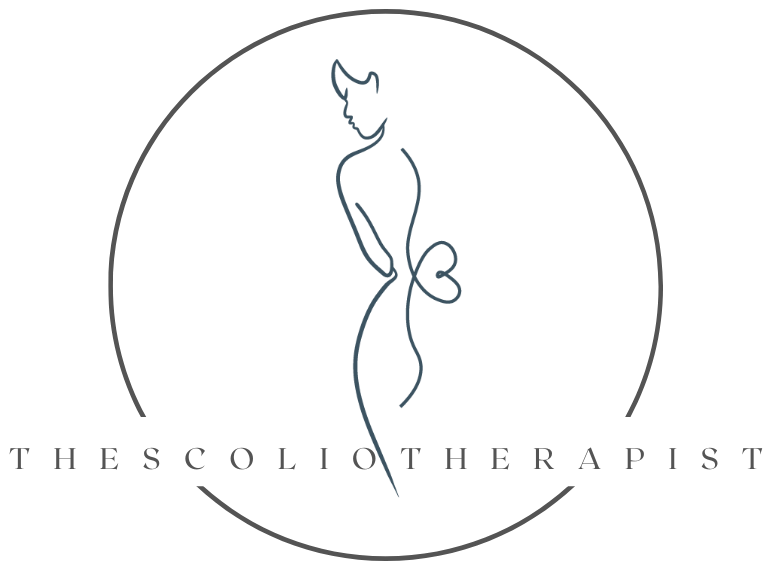3 Scoliosis Exercises You Can Start With Today
Today’s episode is designed to empower you to start treating your scoliosis symptoms at home with a few simple exercises. These scoliosis exercises can help you gain core strength, improve your posture and alignment, and give your spine the support it needs. And the best part is that these exercises don’t require you to buy expensive equipment or join a fancy gym — you can do them at home with no props or equipment.
Scoliosis Exercises Don’t Have to Be Overwhelming
Thinking about exercising with scoliosis can be intimidating, especially when you’re just starting out. Searching for “scoliosis exercises” on the internet usually ends with contradicting information or training programs that require you to spend hours each day at the gym.
There’s not necessarily anything wrong with an intense exercise routine, as long as it’s created specifically for scoliosis patients. But that sort of program also isn’t necessary. There are plenty of time-efficient, effective scoliosis exercises you can do at home.
I’ve created a free resource to help you start working out at home. Here’s the link: 10 At-Home Exercises for Scoliosis for free!
This video includes scoliosis exercises that are safe, effective, and easy to do at home. And these exercises focus on elongation, breathing, mobility, balance, and strengthening — all the things that can help you protect your curve and reduce back pain. I’ll cover three of the exercises here, and you can watch the video for explanations and demonstrations of all 10 exercises.
3 Scoliosis Exercises to Start With
Let’s talk about three of my favorite scoliosis exercises. I’ll go over how to perform them and how to progress them as you gain strength and confidence. All of these exercises are designed to be safe for scoliosis patients, which means they don’t include any end-range rotation or bending.
You don’t need props or expensive equipment for these exercises, but a mirror is really helpful. It’s important to have good posture and alignment when you’re exercising, and a mirror makes it easier to verify whether your alignment is off.
A yoga mat is another useful tool. When you perform exercises lying down, you can use the mat to check your alignment. Make sure you’re centered on the mat and that your head, torso, hips, and legs are all the same distance from the edges of the mat. The “squishiness” of a yoga mat can help you assess your vertical alignment — make sure your ribs and hips are equally weighted into your mat.
Elongation at a Wall
All you need for this elongation exercise is a wall. Stand facing the wall, put your palms on the wall, and slide your hands up into a V position. Then, slide your hands down the wall, bending your elbows out to the side and bringing your fingertips together in front of your nose.
To progress this exercise, you can do more repetitions. Another option is to slow it down and spend more time breathing in each position (hands up vs. hands level with your nose). Try to deepen your breathing as much as possible.
Schroth Walk
This exercise can be challenging because it tests your ability to maintain strength, posture, coordination, elongation, balance, and alignment while you’re moving. Essentially, you’re just working on walking slowly while maintaining good posture and alignment.
Don’t worry if you start out very wobbly doing the Schroth walk. Most people do. It can be frustrating, and you might even be tempted to give up when you can’t do it perfectly the first few times. But keep going — you will get better with practice!
The easiest way to start is to walk flat-footed. As you improve, you can progress to walking up on the balls of your feet, which challenges your balance, coordination, and strength more. The next progression is to add a pause between each step so you spend a little time balancing on one leg.
Knee Hover
Set up by getting on your hands and knees on your yoga mat. Make sure your hands are directly under your shoulders and your knees are under your hips. Then, tuck your toes under and pull your knees off the floor for a few seconds. You don’t have to lift your knees very high — just a couple of inches.
This exercise strengthens your shoulders and your core. It also helps you lengthen your spine. To progress this movement, you can do more reps and/or spend more time hovering your knees off the floor.
Safety Considerations
Here are some important things to remember when you do these exercises:
Never push through pain
If the exercise is painful, modify it to have a shorter range of motion
Focus on slowing down your breath
Listen to your body
Don’t hold your breath — breathe through the movement
Regular Exercise Helps You Feel Better
The best way to treat your scoliosis at home is to practice elongation and strengthening consistently. I really like these at-home exercises because they’re easy to fold into your daily routine. You can do a couple exercises in the morning while you’re getting ready. Or you can exercise during your lunch break. You don’t need to do all the exercises at once. I use them to break up my day a little bit and get some consistent movement in my routine.
Are you ready to get started with some simple, effective scoliosis exercises? Here’s the link to get your free video: 10 At-Home Exercises for Scoliosis.
And when you’re ready for the next step, I offer small-group coaching services that allow you to go deeper into understanding your curve and how to support it. If you have any questions about the exercises or want to learn more about my scoliosis coaching services, schedule a call with me.
If you enjoyed this episode, please leave a rating and make sure you’re subscribed to the podcast to get every episode when it airs.
